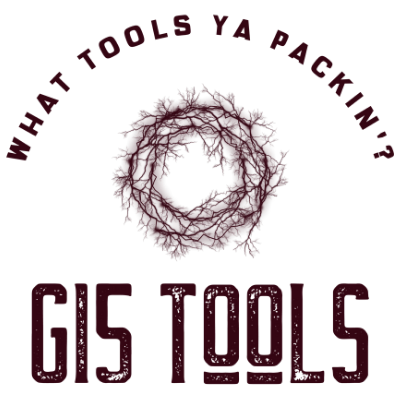Modern procurement teams sit on years of PO, invoice, and contract data, yet much of it stays locked in static reports. AI and spend analysis together turn that backlog into a live feed of opportunities, risks, and working-capital levers. With consistent taxonomies, reliable supplier IDs, and line-level context, analytics moves from “what happened” to “what to do next.”
Many organizations begin by closing data gaps and standardizing categories, then considering procurement automation, and streamlining routine approvals so analysts can focus on exceptions and strategy rather than clerical tasks. Once the pipes are clean, AI models can classify, predict, and recommend with far less hand-holding.
Why AI and Spend Analysis Are Converging
Traditional spend cubes summarize the past; AI adds pattern recognition and prescriptive guidance. Together, AI and spend analysis can flag duplicate invoices, predict commodity-linked cost moves, and suggest contract or supplier actions with confidence scores. That blend replaces month-end hindsight with timely nudges during the buying cycle, when decisions still change outcomes.
What “AI-Ready” Spend Data Looks Like
Reliable insights start with structure. An AI-ready dataset ties suppliers to consistent master records, links POs to goods receipts and invoices, and maps descriptions to a shared taxonomy. Currency normalization, FX timestamps, unit-of-measure conversions, and contract IDs matter as much as model choice. When PO lines carry item attributes, models can compare like-for-like and avoid false variance.
Governance is part of the foundation. A clear data dictionary, access controls, and change logs let finance and audit teams trust the output. That trust is what turns analytics into action, not another dashboard competing for attention.
High-Impact Use Cases for AI in Spend Analysis
Savings discovery and price variance
AI and spend analysis uncover price spread for identical or near-identical items across plants, vendors, or delivery terms. Models cluster similar lines and isolate the drivers, so category managers see not just the gap but the most plausible lever. Where should-cost curves exist, predicted ranges show when quotes sit out of bounds and merit a rebid.
Policy and compliance control
Contract leakage and maverick purchases drain negotiated value. Linking line items to contract clauses and approved supplier lists lets algorithms spot unapproved SKUs, missing three-way matches, or sudden shifts to non-preferred vendors. Alerts route to owners with the evidence attached, which shortens back-and-forth and raises on-contract spend.
Risk sensing across the supplier base
News, sanctions lists, and ESG disclosures move faster than periodic supplier reviews. NLP scanners monitor those sources and flag entities tied to controversies or restrictions, then overlay the exposure on current spend. Tier-two and tier-three dependencies emerge when parent-child hierarchies are mapped, which supports earlier mitigation and dual-sourcing.
Working capital and discount capture
Payment-term recommendations work best when supplier reliability and discount history are considered. Models learn which vendors deliver on time and which invoices tend to match cleanly, then present a short list of discount windows that align with cash forecasts. Treasury decisions move from generic policy to targeted, evidence-based offers.
Models in Plain Language
Classification and clustering
Text classifiers read messy descriptions and assign consistent categories; clustering groups look-alike buys into patterns that point to framework contracts or consolidated specs. Precision rises when buyers confirm edge cases, which trains the model for the long tail of infrequent purchases.
Anomaly and duplicate detection
Isolation Forests or autoencoders spot outliers in price, quantity, or freight surcharges. Combined with invoice header and line-level checks, those methods catch duplicates that sneak past simple “same number, same date” rules and reduce rework in Accounts Payable.
Forecasting with external indices
Time-series models align category costs with external benchmarks such as producer price indices. When trends turn, AI and spend analysis can schedule sourcing waves earlier, propose index-linked clauses, or suggest hedging conversations instead of last-minute firefighting.
KPI Dashboard: Measuring Value from AI and Spend Analysis
Consistent metrics keep improvements visible and auditable. Start with a small, high-signal set and review frequently.
| KPI | Definition | Baseline | AI-Target | Owner | Cadence |
| On-contract spend | Percent of spend under active agreements | 62% | ≥85% | Category Lead | Monthly |
| Price variance (PPV) | Deviation vs. should-cost or index | 3.8% | ≤1.5% | Cost Analyst | Monthly |
| Tail-spend share | Percent of spend across long-tail suppliers | 27% | ≤15% | Sourcing | Quarterly |
| Invoice touch rate | Percent of invoices needing manual work | 52% | ≤15% | AP Manager | Monthly |
| Discount capture | Realized early-pay discounts vs. available | 33% | ≥70% | Treasury/AP | Monthly |
Well-chosen KPIs build confidence. Lower touch rates and higher on-contract percentages show that controls are working, while tighter PPV confirms that sourcing actions stick.
Operating Model: From Insight to Action
Dashboards help, but embedded workflows change outcomes. Insights from AI and spend analysis should trigger tasks inside sourcing tools, update negotiation packs with comparable quotes, and open corrective-action tickets when policy breaks appear. Data translators speed this handoff and keep models focused on the questions that matter.
Risk and privacy deserve a home in the playbook. Role-based access, supplier PII tokenization, and model drift checks align analytics with internal policy and external guidelines such as the NIST AI Risk Management Framework.
FAQs
How is AI different from a traditional spend cube?
A cube reports history. AI classifies in real time, finds anomalies, forecasts cost movements, and proposes actions tied to contracts, suppliers, or terms.
What minimum data is needed to start?
A reliable supplier master, 12–24 months of PO, receipt, and invoice lines, a shared taxonomy, and contract references. More context improves precision, yet a focused pilot can begin with those basics.
How long until results appear?
Most teams see the first results within 6–10 weeks after data hygiene and the first active-learning loop. KPI gains arrive as insights are embedded into sourcing events and AP workflows.
Will AI replace category managers?
No. Models triage and surface patterns; humans negotiate, set strategy, and balance trade-offs across cost, risk, and service.
How are results validated?
Finance sign-off on savings, linked contracts for compliance claims, and audit trails for AP exceptions. Benchmarks from reputable sources help set targets and keep progress honest.
Word count (text) – 995
Characters (with meta description) – 6972






